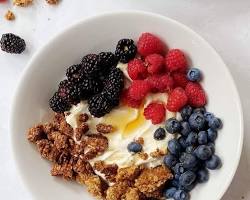Healty Life food
Eating healthy foods is a foundational element of a healthy life! Here are some ideas for incorporating nutritious and delicious choices into your diet: Focus on whole foods: Prioritize whole, unprocessed foods over processed alternatives. Think fruits, vegetables, whole grains, beans, lentils, nuts, seeds, lean protein sources like fish and poultry, and healthy fats like olive oil and avocado. Rainbow on your plate: Aim for a variety of colors in your meals and snacks. Different colors represent different nutrients, so eat the rainbow for a well-rounded diet. Make friends with fiber: Fiber helps with digestion, keeps you feeling full, and nourishes your gut microbiome. Load up on fruits, vegetables, whole grains, beans, and lentils. Protein power: Include protein sources in every meal and snack to help build and repair tissues, regulate hunger hormones, and boost metabolism. Choose lean protein options like fish, poultry, beans, lentils, Greek yogurt, and tofu. Healthy fats for fue
.jpg)
.jpg)

